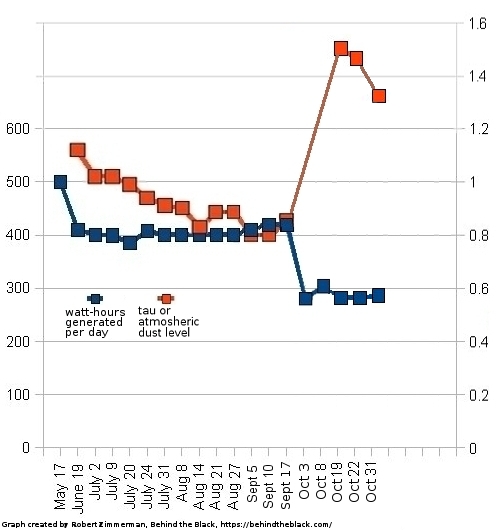Crash prediction for Long March 5B core stage narrows

This morning’s report by the Aerospace Corporation has narrowed the crash time and location for China’s out-of-control Long March 5B core stage to six orbits, about 8 hours, on November 4, 2022, with the prediction centered over a point in the middle of the Indian Ocean.
The company’s graphic to the right shows the orbital tracks. Note that this prediction puts many habitable locations under risk, including parts of the United States, Spain, Africa, and Australia.
Since the crash is now expected tomorrow, expect further updates later today.
The second graphic to the right has also been created by the Aerospace Corporation. It shows the top 20 largest man-made objects that have fallen out-of-control from orbit. Four of the top six were dropped on the world by China, all within the past two years. All but one of the others occurred prior to 1987, before the U.S. and Russia took positive action to prevent such things. The one exception, Phobos-Grunt, was an unexpected failure, its rocket putting it into an unstable orbit rather than sending it to Mars.
China, like the U.S. and Russia, has signed the Outer Space Treaty. That treaty requires each signatory to control the objects it puts in space, and makes it liable for any damage caused by such objects. The U.S. and Russia have both tried very hard to abide by that treaty. China however has thumbed its nose at it.
We must wonder what China will do if this core stage kills someone when it comes down tomorrow.

This morning’s report by the Aerospace Corporation has narrowed the crash time and location for China’s out-of-control Long March 5B core stage to six orbits, about 8 hours, on November 4, 2022, with the prediction centered over a point in the middle of the Indian Ocean.
The company’s graphic to the right shows the orbital tracks. Note that this prediction puts many habitable locations under risk, including parts of the United States, Spain, Africa, and Australia.
Since the crash is now expected tomorrow, expect further updates later today.
The second graphic to the right has also been created by the Aerospace Corporation. It shows the top 20 largest man-made objects that have fallen out-of-control from orbit. Four of the top six were dropped on the world by China, all within the past two years. All but one of the others occurred prior to 1987, before the U.S. and Russia took positive action to prevent such things. The one exception, Phobos-Grunt, was an unexpected failure, its rocket putting it into an unstable orbit rather than sending it to Mars.
China, like the U.S. and Russia, has signed the Outer Space Treaty. That treaty requires each signatory to control the objects it puts in space, and makes it liable for any damage caused by such objects. The U.S. and Russia have both tried very hard to abide by that treaty. China however has thumbed its nose at it.
We must wonder what China will do if this core stage kills someone when it comes down tomorrow.


















